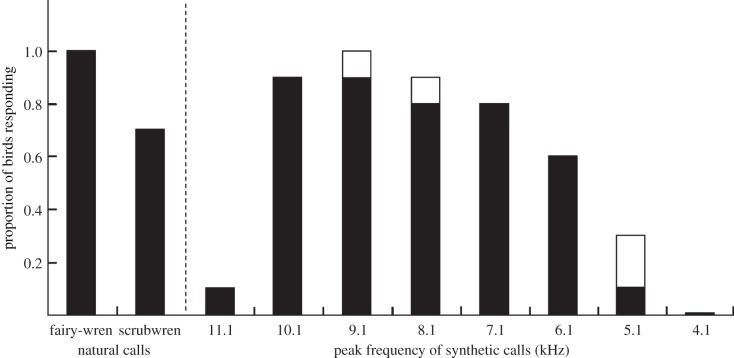Figure 2.
The results of experiment 2, showing the proportion of fairy-wrens immediately responding to synthetic calls varying in peak frequency (raw data; n = 10 for each column). Natural alarm calls of fairy-wrens (mean peak frequency: 9.1 kHz) and white-browed scrubwrens (mean peak frequency: 7.1 kHz) served as positive controls. Synthetic calls had fairy-wren base properties (see text). Synthetic crimson rosella contact calls, the neutral control, did not elicit any response and are not represented here. Black bars, fleeing; white bars, scanning.

